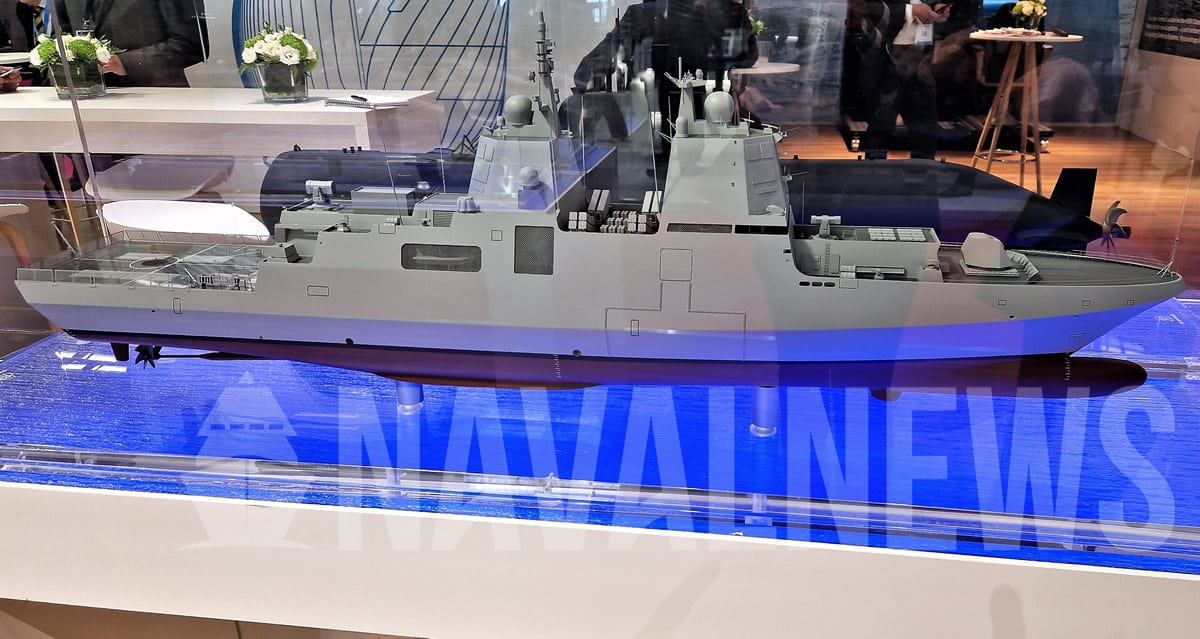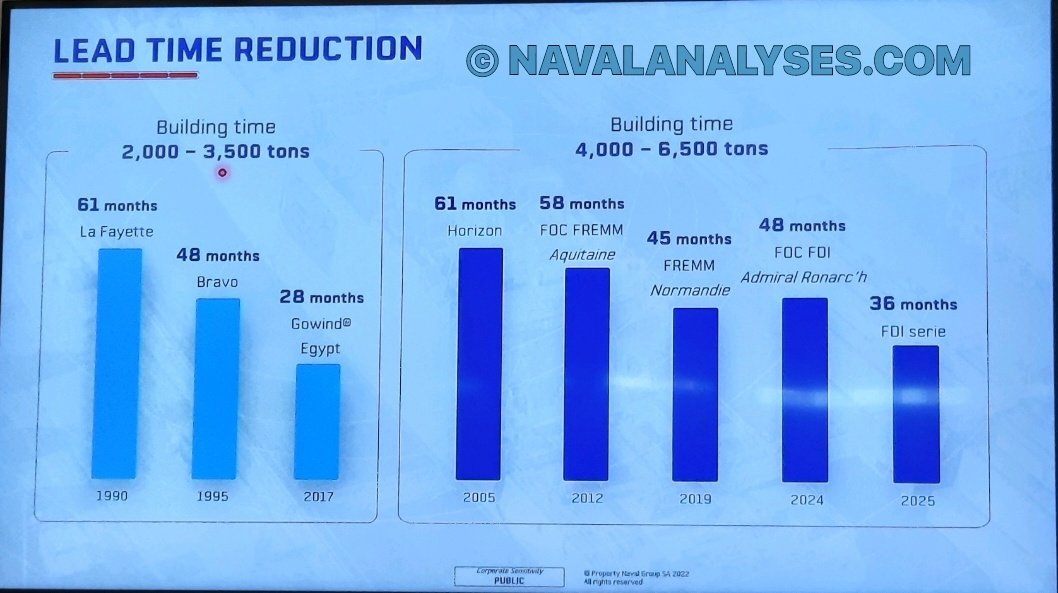 MEKO A-300 Showcases Mix Of Classic And Next Gen Frigate Capabilities
MEKO A-300 Showcases Mix Of Classic And Next Gen Frigate Capabilities
Thyssenkrupp Marine Systems (TKMS) revealed design details for its new MEKO A-300 frigate at Euronaval in Paris. The concept for the 129 m, 6,000-tonne ship displayed a mix of what could be termed ‘classic’ and ‘next generation’ frigate capabilities.
TKMS believes the MEKO A-300 concept and design offer benefits in several areas, Jonathan Kamerman, Head of Product Sales, told Naval News at the show.
MEKO A-300 Lethality

Note the 127mm main gun, Mk 41 VLS and the “half Ram” 11-cell Rolling Airframe Missile (RAM) launcher. While the regular MK-144 launcher with 21 missiles is fitted on top of the helicopter hangar, the smaller launcher is fitted forward in order not to block the view from the bridge.
First is lethality, he explained:
“We’ve really packed the ship with anti-air warfare (AAW), anti-surface warfare (ASuW), and anti-submarine warfare (ASW) hard-kill and soft-kill assets.”
Jonathan Kamerman, Head of Product Sales, TKMS
He pointed to options for 64 strike-length Mk 41 vertical launching system (VLS) cells or a mix of 32 strike-length Mk 41s and 36 Mk 56 VLS cells. These options enable a spread of AAW lethality, ranging from exo-atmospheric, to area, to local air-defense capabilities.
The design includes directed energy weapon capability, provided by two high-energy lasers (by Rheinmetall and MBDA Germany) and two high-powered microwaves delivering destructive thermal effects and disrupted control effects, respectively.
Four MASS launchers provide soft-kill AAW capability.
In ASW terms, hard-kill systems include TKMS’s own SeaSpider anti-torpedo torpedo. Two four-round SeaSpider launchers are fitted, one either side of the frigate amidships. The frigate’s torpedo capabilities can include lightweight torpedoes, and heavyweight torpedoes – including TKMS’s own SeaHake – deployed via a modular launching system fitted in the ship’s mission bay.
Anti-ship and land-attack capability is provided by 16 deck-launched surface-to-surface missiles, like Kongsberg’s Naval Strike Missile (NSM). The ship’s VLS cells can also carry land-attack systems.
Land attack capabilities
The second key area is naval fires-based land attack, Kamerman continued. He highlighted the Oto Melara 127/64 naval gun. Bringing Vulcano guided munitions and firing 34 rounds per minute, “This is a land dominance weapon,” he said – especially when combined for example with aviation support through embarked helicopters and unmanned aerial vehicles (UAVs). A-300 can carry four UAVs.
MEKO A-300 survivability

The container is to deploy Raytheon’s Coyote counter-UAV systems.
Third is survivability. The ship has two ‘fighting islands’, one forward and one aft. Each contains propulsion, electrical supply, command and control (C2), and sensors and effectors to support full, three-dimensional offensive and defensive warfare, Kamerman explained.
“The whole idea [is], when the ship sustains damage, it doesn’t sink: it continues to float. It doesn’t stay still; it continues to move. It is capable of defending itself and giving punishment, even if one half of the ship is rendered ineffective.”
Central to survivability is stealth. The hull and superstructure design includes very severe angles for the plating. Any open spaces in the superstructure are fitted with stiff, tungsten-made, Faraday cages to reduce those spaces’ radar signature. All upper deck mounts and fittings are positioned behind fixed or collapsible bulkheads. To tackle the hull temperature factor within the ship’s signature equation, a seawater-based internal cooling system keeps hull temperature very close to that of the sea’s surface.
...
https://www.navalnews.com/event-news/eu ... rettyPhoto


